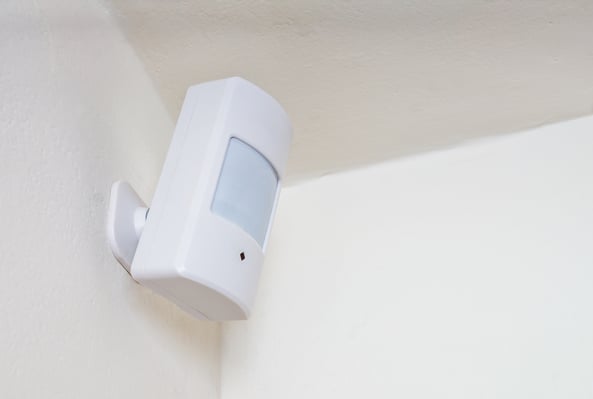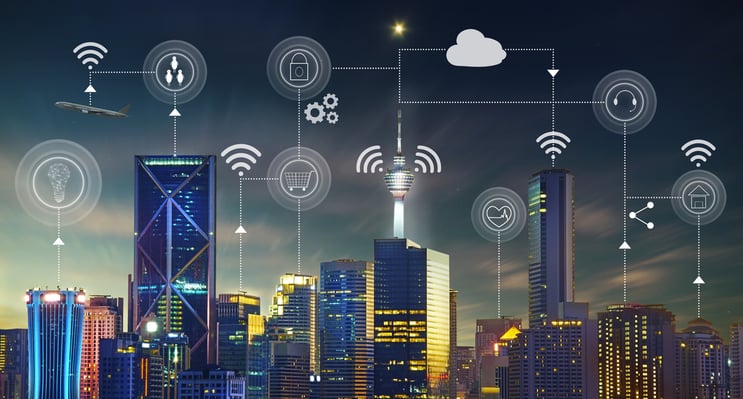The Importance of Sensors in Modern Engineering

Energy efficiency, water conservation and clean power have gained importance in the construction industry during the last few decades. Many building owners are aware of the benefits of LED lighting and high-efficiency motors, among other technologies. However, buildings can use resources even more efficiently if MEP systems are controlled by a smart platform. This creates many opportunities for the Internet of Things (IoT).
Traditionally, building systems like lighting, air conditioning and space heating have operated with manual controls. However, the needs of a building and its occupants are constantly changing, and adjusting manual controls all the time is impractical. To achieve peak performance, building systems must measure operating conditions and adjust themselves. This is only possible by adding sensors, which have a key role in smart building systems.
Make your building systems smarter and reduce your energy and water bills.
Sensors and automatic controls can improve the savings of an energy efficiency project. For example, a ventilation system saves plenty of energy if all air handlers are equipped with high-efficiency motors. However, even greater savings are possible if occupancy sensors are used to adjust airflow
(Read more: Demand controlled ventilation).
Selecting the Right Sensor for Each Application
There is a wide variety of sensors, and their prices change significantly depending on the application. When selecting sensors, the following are two important factors to consider:
- The variables that must be monitored.
- The required accuracy and precision.
You will often find that several sensors measure the same variable with different methods, and selecting the best match for each application is important. Some sensors are also susceptible to external conditions, and this may limit their use in certain applications.
Consider the occupancy sensors used to control lighting fixtures: they can be ultrasonic, infrared or dual. Infrared sensors require a direct line of sight between themselves and occupants, while ultrasonic sensors can detect occupants behind obstacles. However, ultrasonic sensors may operate incorrectly when they are close to sources of noise or vibration.

When there are many sensing methods available for the same variable, differences in cost and accuracy can be expected. Ideally, the sensor should have a suitable accuracy for the intended application, but excessive accuracy will represent a waste of money. The most accurate sensing methods are typically the most expensive.
Combining Sensors with Enhanced Reality Systems
The combination of sensors and Building Information Modeling (BIM) creates many possibilities. For example, BIM models can be updated automatically with the information collected by sensors. This way, maintenance personnel can monitor hard-to-reach equipment and components more easily. Engineers and other technical personnel can also use headgear to visualize important data during a site inspection.
Enhanced reality is very useful when working with variables that are undetectable by humans. For example, you can use headgear and sensor data to “see” temperature differences, electric current, airflows, water flow inside piping, etc. This feature makes troubleshooting and inspections much easier, while improving workplace safety. When hazards like high temperature become visible with enhanced reality, they can be avoided more easily.
The Next Generation of Sensors
According to MIT researchers, photovoltaic technology can greatly expand the applications of sensors. Conventional sensors use batteries or external power sources, but this becomes impractical for a very large number of sensors. However, the issue can be solved by with miniature photovoltaic cells.

The photovoltaic technology proposed for sensors is very different from conventional solar panels. Instead of using heavy solar cells made of silicon, sensors can use thin-film perovskite cells, which are flexible and suitable for almost any surface. This concept can be used to harvest energy from any light source, not only the sun, in both indoor and outdoor applications.
- Miniature photovoltaic cells can be combined with RFID technology to make sensors completely autonomous.
- While the PV cell harvest power from light sources, the RFID tag allows data transmission with minimal energy consumption.
Printable PV cells are much less efficient than conventional solar panels, but their power output is enough for sensors. The light weight, low cost and flexibility of perovskite cells also make them ideal for instrumentation.
Sensors with photovoltaic power and RFID tags could be deployed anywhere in a building, gathering abundant information. A Building Management System (BMS) can use this data to optimize energy consumption and improve efficiency.
Nearby EngineersNew York Engineers has a MEP design track record of 1,000+ projects. Contact us via email (info@ny-engineers.com) or phone (786) 788-0295212-575-5300, and make sure your building systems meet codes.

Michael Tobias
Michael Tobias, the Founding Principal of NY Engineers, currently leads a team of 150+ MEP/FP engineers and has led over 4,000 projects in the US
Join 15,000+ Fellow Architects and Contractors
Get expert engineering tips straight to your inbox. Subscribe to the NY Engineers Blog below.

